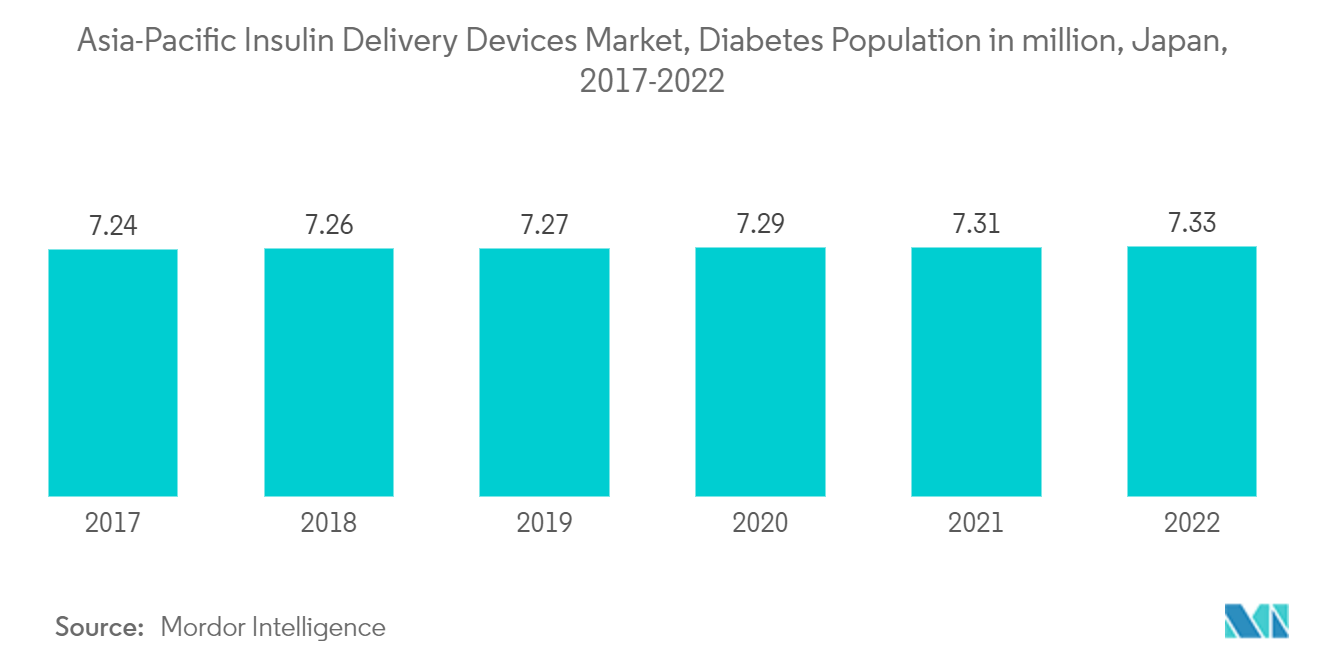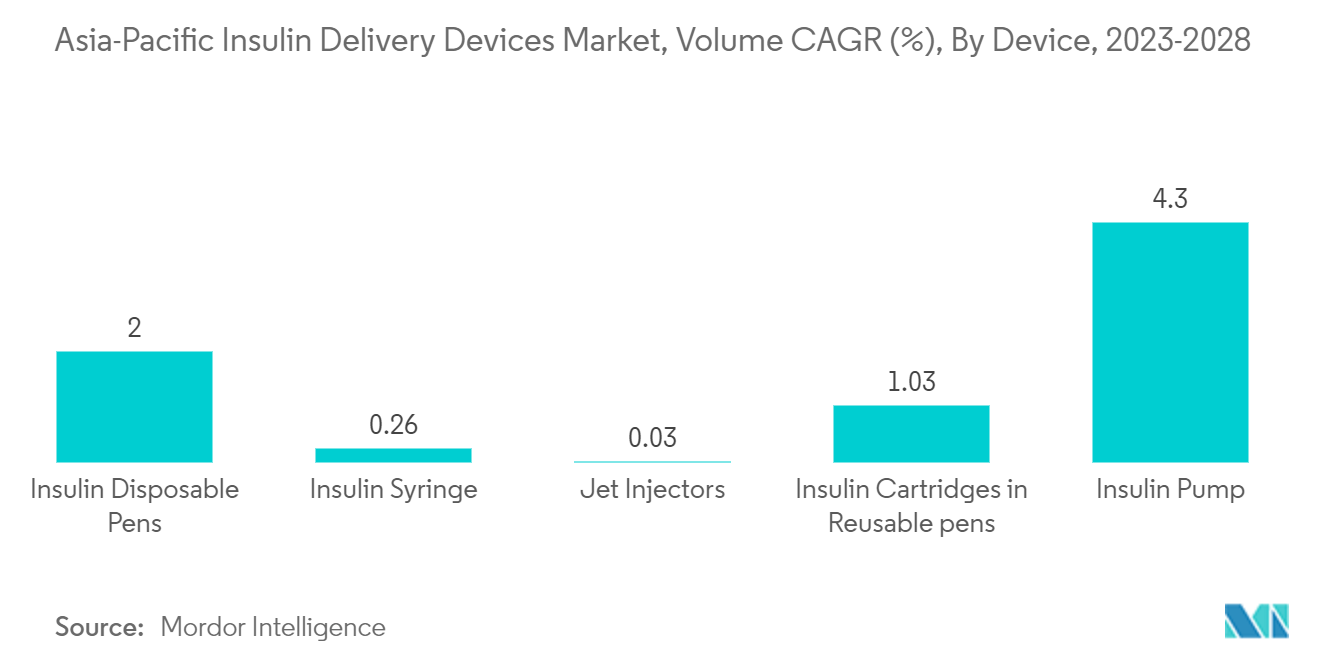Market Trends of Asia-Pacific Insulin Delivery Devices Industry
Japan Holds the Major Market Share in the Asia-Pacific Insulin Delivery Devices Market in the current year
Japan accounted for 41% of the Asia-Pacific insulin delivery devices market share. In developing countries, such as Japan, China, and India, the rate of diabetes among the population is growing, mainly due to the unhealthy lifestyle of the population. The increasing geriatric population in Japan is driving the insulin delivery devices market. The changing lifestyle trends and high disposable income among the population are prominent driving factors for the sales of insulin delivery devices.
Insulin was initially considered to be the treatment method only for type-1 patients. However, over the years, insulin is also used by many type-2 patients as a line of treatment. According to IDF 2022 figures, around 11 million persons include diabetes in Japan. Diabetes became a global epidemic. Type 2 diabetes is related to adopting a sedentary lifestyle, which develops innate resistance to insulin, in contrast to Type 1 diabetes, which is brought on by an immune system failure. As a result, Type 1 diabetes is known as insulin-required diabetes, and Type 2 diabetes is known as insulin-dependent diabetes. One of the greatest senior populations in the world is found in Japan, where type 2 diabetes is more likely to develop. As Japan's population continues to age, diabetes is becoming more common. Blood glucose levels are increasingly monitored and managed to prevent adverse effects like cardiovascular disorders.
The Ministry of Health, Labour, and Welfare (MHLW) includes designated diabetes as a top healthcare priority. A large economic cost is associated with the high incidence of type 2 diabetes. Patients with co-morbid conditions, including hypertension and hyperlipidemia, and those with complications include higher diabetes expenditures. Costs grow when there are more issues. People with diabetes can freely see doctors in Japan because of well-organized medical insurance systems that pay for all costs associated with treating diabetes mellitus.
Additionally, self-injection of insulin for treatment is made lawful and is now covered by insurance. The Japan Association for Diabetes Education and Care runs several disease management programs for the Japanese healthcare system. Regarding diabetes care, Japan is one of the Asia-Pacific region's leaders.

Disposable pens includes highest market share in the Asia-Pacific Region.
The Asia-Pacific market for Insulin Disposable pens is valued at more than USD 7.5 billion in the current year, with 39% of the market share. It contains a prefilled insulin cartridge. Once used, the entire pen unit is thrown away. Insulin in pens and cartridges is generally more expensive than bottled insulin and syringes. Insulin cartridges in reusable pens are known to be a needed extension to insulin pens. A small quantity of insulin is wasted when pens are used, making the process less economical. A large set of diabetic type-1 patients is children. There is a need for an alternative to the existing needle-based delivery system, which is painful. Thus, an insulin jet injector, a painless insulin delivery system, was introduced. Most types of insulins are manufactured in the form of cartridges, thus, making them easily accessible. These devices include all the functional benefits of reusable pens and are cost-effective, as these cartridges are less expensive when compared to disposable insulin pens in the long run.
In recent years, diabetes prevalence alarmingly increased in the Asia-Pacific area. Diabetes is becoming more prevalent in developing nations like China and India. Patients with diabetes must make several adjustments during the day to keep their blood glucose levels within acceptable ranges. Examples include taking oral anti-diabetic medicine or consuming more carbs while monitoring their blood glucose levels. Leading manufacturers are concentrating on technical advancements and creating cutting-edge items to capture a sizeable portion of the market.
It is therefore anticipated to drive the category expansion during the projected period due to the factors above.

